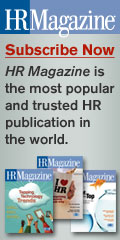What is your 401(K) costing you?
 Print this Article | Send to Colleague Print this Article | Send to Colleague
The Employee Retirement Income Security Act (ERISA) requires plan fiduciaries to act prudently and solely in the interest of the plan's participants. Plan fiduciaries must ensure that the services provided are necessary and that reasonable compensation is paid for such services. How services are provided and service providers are compensated (including revenue-sharing) is complex, and is approaching a monumental challenge for plan fiduciaries.
Recent articles addressing the Department of Labor's new service provider fee disclosure regulations numbered 408(b)(2) and 404(a)(S) underscore how service providers must disclose their fees and how plan sponsor accountability will be altered. Specific disclosure obligations for plan service providers must be provided to responsible plan fiduciaries so they may make better decisions when selecting and monitoring service providers for their plans. This information will allow the responsible plan fiduciaries to assess the reasonableness of total compensation, both direct and indirect, received by the service providers, its affiliates and/or subcontractors; identify potential conflicts of interest; and satisfy reporting and disclosure requirements under Title 1of ERISA. Plan fiduciaries have a responsibility to examine and audit the accuracy of the service fees.
The new regulations place a heavy burden on the plan fiduciaries. The regulations demand that service providers change how they relay information to plan fiduciaries who, in turn, inform participants in order to become more transparent in communicating their services and related fees. The regulations are effective for existing and new contracts or arrangements between covered plans and service providers as of July 1, 2012. Greater fee transparency allows plan fiduciaries to make better, more informed decisions, which ultimately benefits plan participants and beneficiaries. So, this is a good thing, right? Maybe, and maybe not. Most individual investors are accustomed to seeing fees associated with investments outside of their plan, but often don't realize that there are fees associated with their company 401(k) plans and these fees are frequently passed along to the participants. The goal is that participants will use this fee information to select lower-cost investment options and have access to better information on administrative and investment fees. Participants are likely to demand more efficient products and services. Plan participants can expect to receive an initial annual disclosure of investment,record-keeping and other retirement plan fees by August 30, 2012. Quarterly statements should include the fees and expenses deducted from the participant or beneficiary's account to which the statement relates.
The new regulations dramatically augment the landscape for plan fiduciaries' risk management strategies. Consider taking action now to mitigate potential participant concern and ensure fiduciary compliance. Advise plan participants of the upcoming disclosure. The prudent plan fiduciary should review the current plan offerings and determine if there are lower-fee offerings, while maintaining a diversified platform. Plan advisors can assist in identifying higher fee offerings that can be redirected to lower-fee offerings. Document the process for making fiduciary decisions and the basis for those decisions and make sure to follow the terms of the plan document. For more information,visit www.dol.gov.
By Virginia L Kirila Assistant Vice President & Corporate Secretary Sentinel Trust Company, LBA    
|
|


